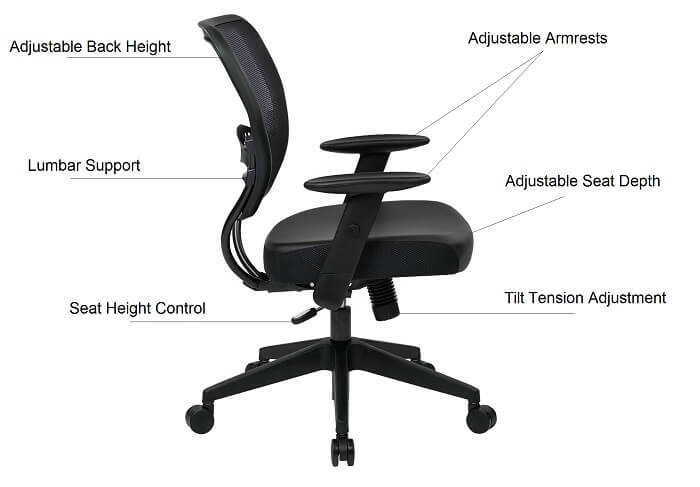
WellnessHQ.net has a really good overview on this topic, we suggest you check out their article: “Are Ergonomic Chairs Worth It? The Definitive Guide“
Normal chairs are okay to use until you begin developing all sorts of body pains.
Sitting in a chair for long periods of time cannot be avoided by many people, especially those who work in an office setting.
The sedentary work-style poses a risk on someone’s health, and a faulty chair can trigger or aggravate some of the health problems.
It is not uncommon for someone to experience back and neck pains from using an uncomfortable chair without proper support.
For this reason, a great ergonomic chair which provides support and comfort from the neck down has become a must-have in the home or office.
But is it really worth the time and money to replace a normal chair with an ergonomic chair?
The Differences Between an Ergonomic Chair and a Normal Chair
When shopping for ergonomic chair, there are seven factors to consider, according to Chiropractor Rodney Lefler, DC.
The seven considerations give you clues as to how an ergonomic office chair is different from a normal chair.
#1 Seat Height
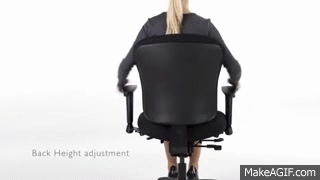
One obvious indication that you are looking at a normal chair is its lack of seat height adjustability.
An ergonomic chair’s height is usually adjusted with a pneumatic adjustment lever.
The usual range of seat height is 16 to 21 inches off the floor, but there are ergonomic chairs especially designed for short people, with a seat height that starts at 14 inches.
A chair that features a seat height adjustment allows a user to place the feet flat on the floor.
#2 Seat Width and Depth
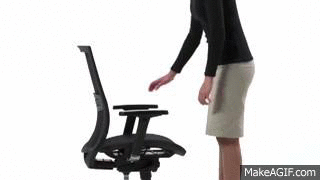
Most people can fit in either an ergonomic chair or normal chair.
Chair manufacturers create the so-called “standard” chair which measurements, including seat depth and width, is right for the average person, but there are manufacturers that offer a chair model in three sizes to offer the right measurements that are just right for short and tall people as well.
An ergonomic chair, however, allows a user to tilt the seat forward or backward to promote proper posture. See how to make a chair more ergonomic.
#3 Lumbar Support
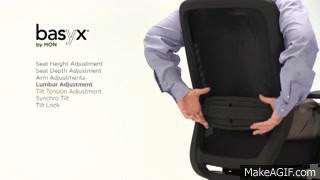
Both ergonomic chair and normal chair have lumbar support, but an ergonomic chair allows for adjustment. It helps to have less back pain from sitting.
A chair usually has a lumbar spine that curves inward, and leaning against that kind of support would lead to slouching, which can put strain in the spine.
Buying an ergonomic chair helps avoid the problem, because the chair has a lumbar adjustment in both depth and height to provide the proper fit for a user’s back.
#4 Backrest
The width of a chair’s backrest should be anywhere between 12 and 19 inches, and a normal chair can have the right measurement for its backrest.
However, an ergonomic chair offers adjustment to provide comfort and proper support.
An ergonomic chair that has a backrest which is separate from the seat usually allows for height and angle adjustment of the backrest.
An ergonomic chair which seat and backrest forming as one piece can have an adjustment feature for forward and backward angles so a user can comfortably lean back.
An ergonomic chair with this kind of adjustment feature has a locking mechanism to secure it from going too far backward.
#5 Seat Material
Both ergonomic chair and normal chair have padding, but the ergonomic variety usually have ample padding both in the seat and backrest for a very comfortable sitting experience, especially when a user would be sitting in the chair for a long period of time.
Ergonomic office chairs usually have leather upholstery, while the general purpose ergonomic office chair may come wrapped in comfortable cloth fabric.
#6 Armrests
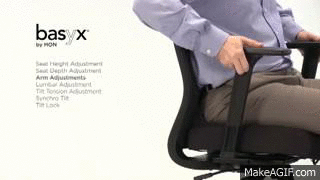
A normal chair has armrests that are fixed, but an ergonomic office chair has armrests that are adjustable to allow for the arms to be rested comfortably, with the shoulders relaxed.
The ergonomic office chair is usually designed to allow for the forearms to be off of the armrests when the user is typing.
#7 Swivel

An ergonomic office chair has a swivel feature so a user can move around the office for convenience.
However, a normal office chair can also have a swivel feature, so this consideration is the least important in the list.